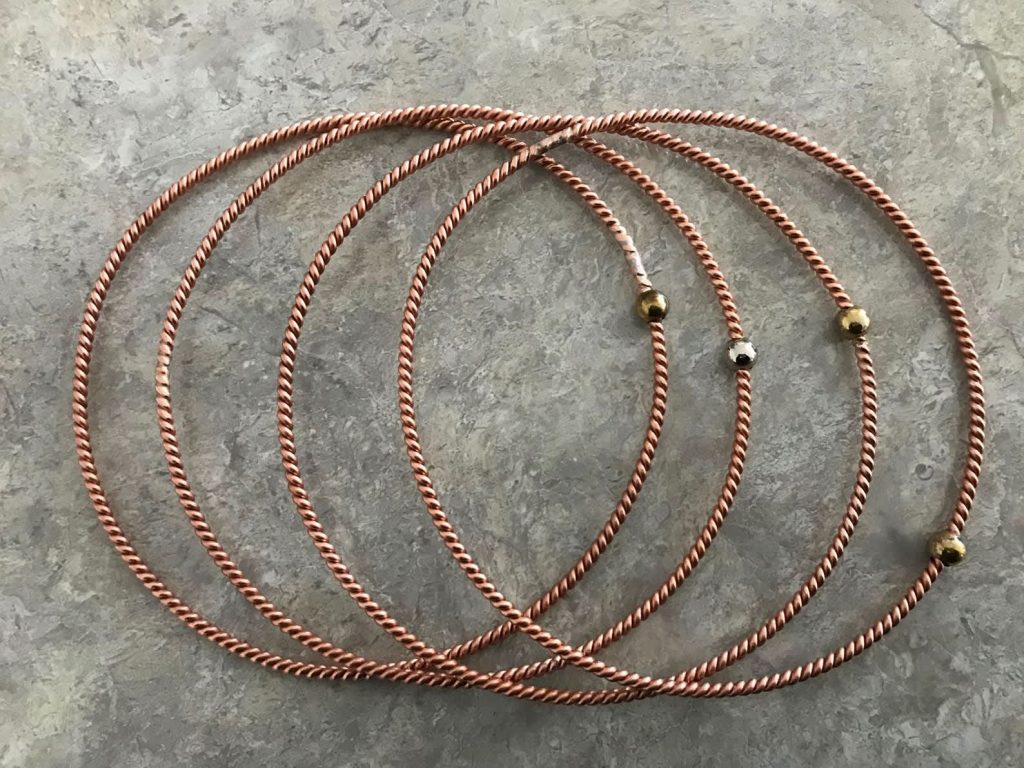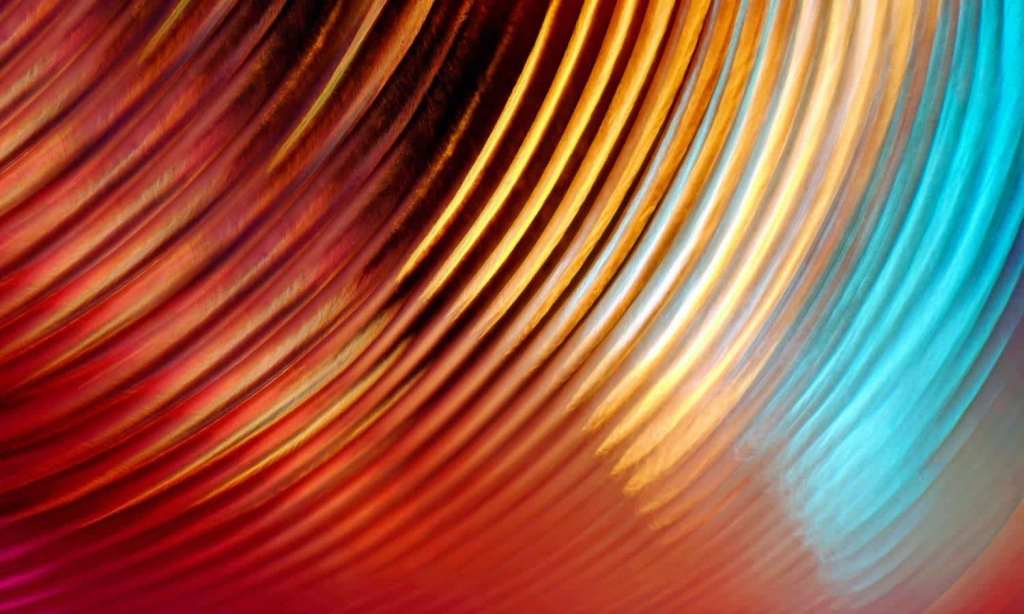It was Kendall Jenner’s house tour with Architectural Digest that repopularised copper energy rings. In the video that accompanied the article, two rings sat on the bench at the end of her bed, while others resided on her bedside lamps. A small ring was even on her water carafe.
While Jenner admitted she wasn’t exactly sure about the function of the rings, she confessed that she did feel better by having them around.
“I don’t know, I feel good around them,” she said.
We did some digging to see what we could find about these rings — you’re welcome. And as a starting fact, these copper energy rings are officially called Tensor Rings.
What are Tensor Rings?
Tensor Rings are made from copper wire and as Jenner said, have something to do with energy. According to Twisted Sage, when copper is heated and melded into wire, it creates a one-way energy flow. When this wire is then twisted back on itself to form a circle, it creates a continuous energy flow that is going both ways.
“When you create a closed-loop coil, energy begins to flow and the laws of physics go out the window,” said astrophysicist, Hans Becker. “They may be the simplest, most efficient source of energy there is…gathering it and condensing it freely from space.”
The energy within these rings is said to be incredibly healing and works as a conductor that neutralises magnetic fields. This energy can bring tranquillity and stability and is said stabilise the bio-magnetic energy fields within the body.
American theoretical physicist John Archibald Wheeler, who coined the term black hole, also discovered the mathematical theory of the tensor field, says Twisted Sage. Regardless of what material is used, whenever a loop is made, a tensor network is created.
According to Wheeler, if a tensor field was to be seen visually, it would look like the thin film that forms when a loop is dipped into soapy liquid, says Dancing with Water. This Tensor Ring technology was re-discovered in 1991 by Slim Spurling and Bill Reid, who were across Wheeler’s work with energy in closed loops.
Unlike Wheeler, Spurling and Reid believed the tensor network to be a more physical manifestation. The duo believed that the tensor field was actually why soapy liquid created a film when a loop came into contact as it “clung” to the field within the loop.

How to use Tensor Rings
These days, many people adorn their homes and bodies with Tensor Rings to cure ailments and impart energy into items. As Tenor Rings come in a number of sizes from big to small, it allows you to use them in a number of ways.
Crystal Sound, a team who make Tensor Rings in The Netherlands, recommend using the rings in the following ways:
- Put a ring on your head to relieve headaches
- Place a ring on your stomach to relieve abdominal pain
- Place a ring around a plant to encourage growth
- Pop a ring under your pillow or under the bed for a better night’s sleep
In an e-book entitled Energise your Home with the Energy Ring, Marie Diamond recommends using copper energy rings for the following:
- Place a ring in any area of the house where the energy feels dark and it’ll feel different within 15 minutes
- To stay alert when working, place a ring under your chair
- Pop a ring around your water bottle to energize the liquid
- Place your groceries inside a large ring for 10 minutes to energise your food
- Place a ring around the water or food dishes of your pet
- Pop a ring around your shower head to energise the water
- Take it with you when you travel and place it under your car or plane seat — this will help you stay uplifted when travelling and is particularly good for fighting jet lag
Where to buy Tensor Rings
A quick Google search should give you a number of retailers where you can purchase Tensor Rings. Etsy is a good place to start, with a number of stores selling Tensor Rings in different sizes.
Whether you’re a believer in Tensor Rings or are sceptical about the science, there’s one thing we can say: Tensor Rings are an easy way to inject some alternative healing into your life. Is a copper energy ring going to heal a headache? Who knows. But it’s a low-risk option to try.







